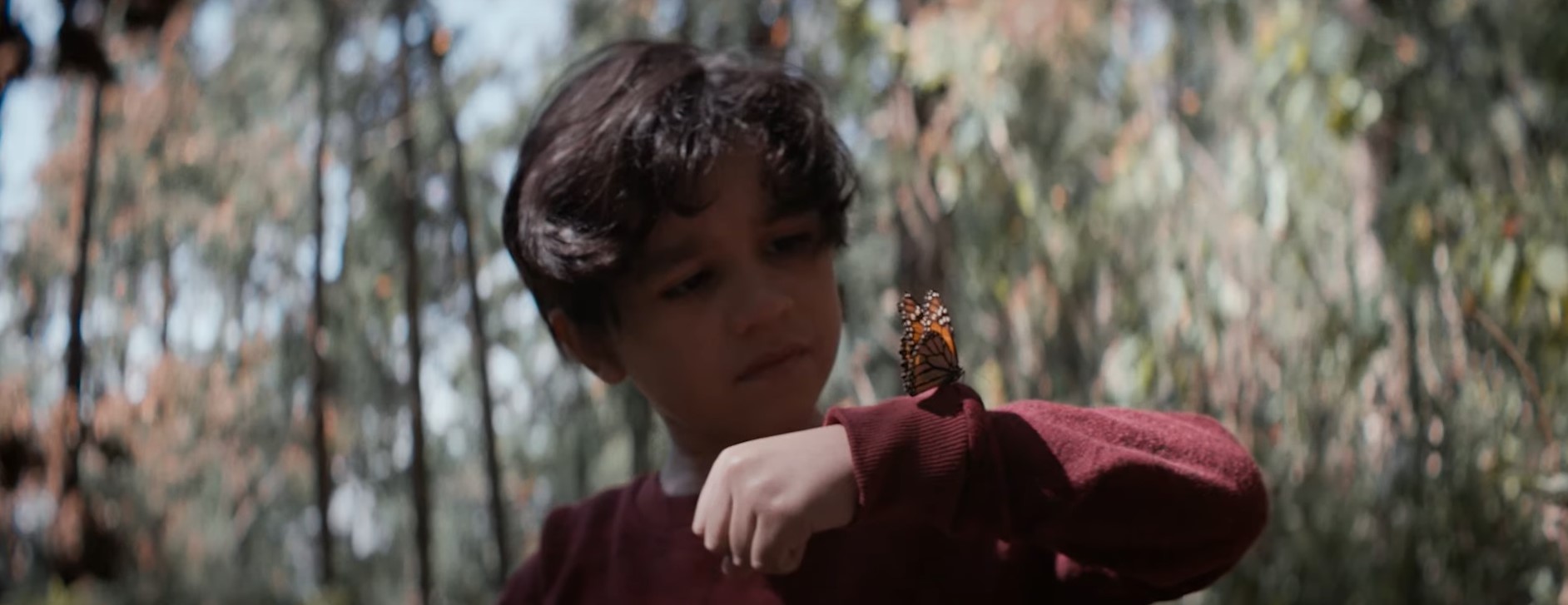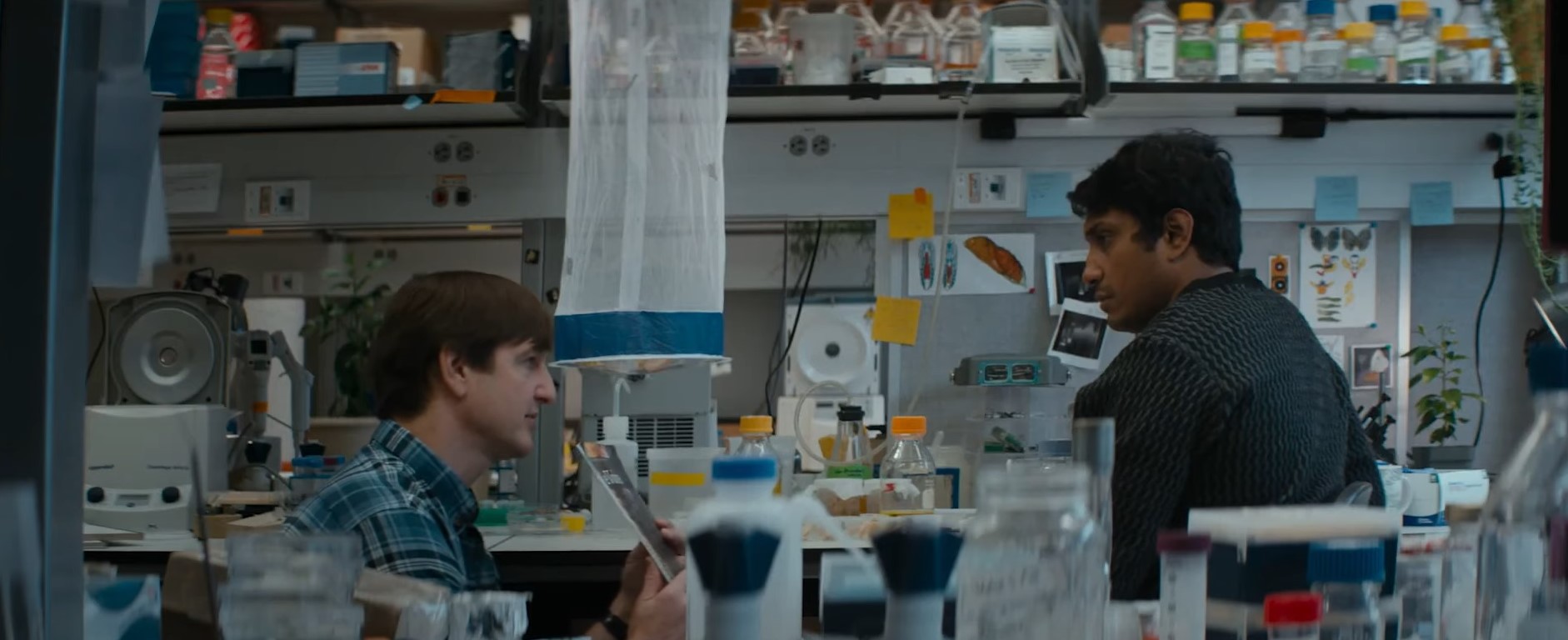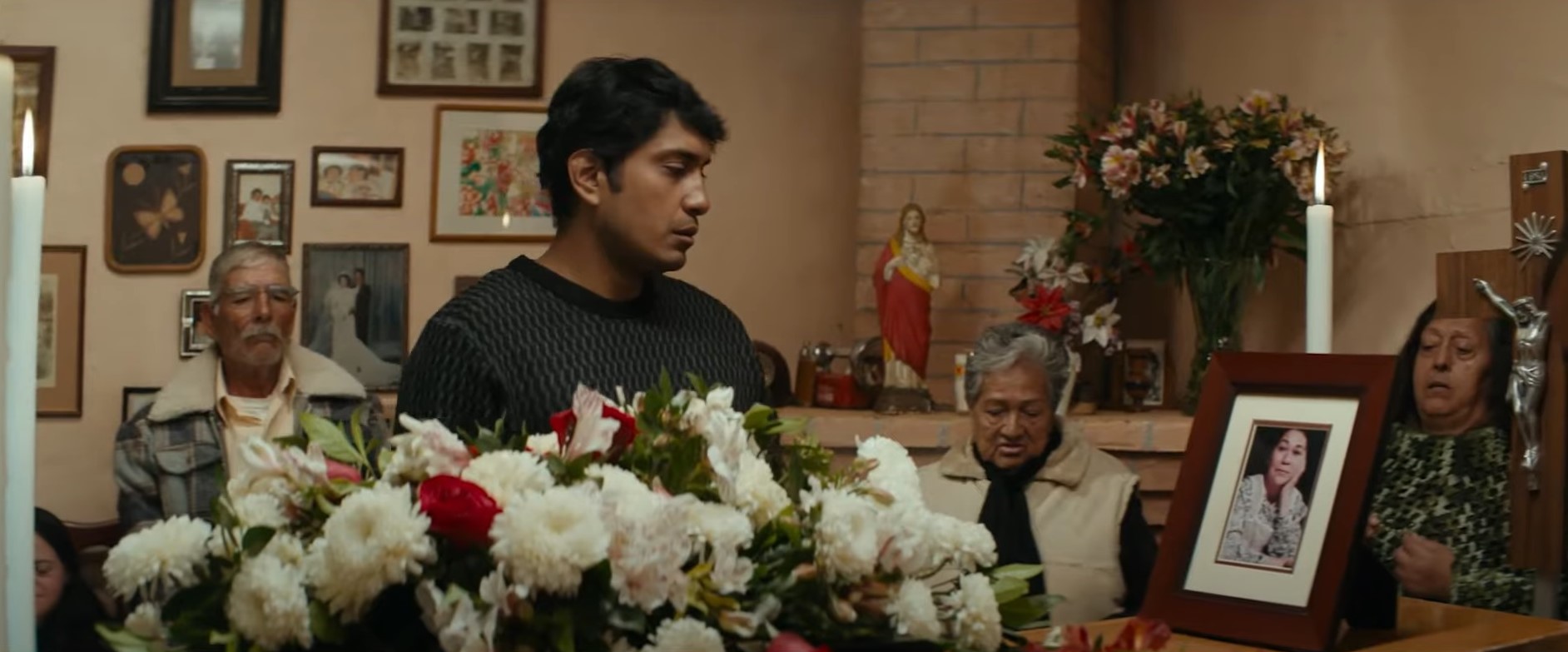Written and directed by Alexis Gambis, ‘Son of Monarchs’ is a Mexican-American film that explores the past and present of a biologist named Mendel (Tenoch Huerta). When Mendel returns to his Mexican hometown for his grandmother’s funeral, he grapples with his traumatic childhood and complicated immigrant identity. Visually stunning and deeply insightful, the bilingual (Spanish and English) film explores how Mendel’s environments — from New York City to the Michoacán monarch butterfly forests around his small town — influence his idea of himself and the world.
The Gambis directorial delves into pertinent concepts such as human-nature relations, cultural identity, scientific exploration, climate change, and self-discovery. Its powerful visual storytelling and poignant narrative realistically portray immigrant aspirations and struggles. Naturally, there are many who wonder whether the film borrows from reality. Let’s jump right in and find out whether ‘Son of Monarchs’ is based on a true story.
Is Son of Monarchs a True Story?
‘Son of Monarchs’ is partially based on a true story. It draws from the experiences — scientific, artistic, social, and personal — of Gambis. A molecular biologist and filmmaker, Gambis is the founder of the Imagine Science Film Festival and the streaming platform Labocine that brings together scientists and artists. He is also a prominent figure in the Science New Wave movement in cinema.

Keen on fusing science and film and determined to change the age-old stereotypes of scientists being rigid and separated from the arts, Gambis deliberately blurs the lines between the socially-constructed polar opposites of science and art in his works. ‘Son of Monarchs’ is a product of precisely this school of thought. “I started becoming interested in film through microscopy and through my work in the laboratory. But in this case, what I find interesting when I make films is to connect the scientific research to both the personal quest but also to these broader, kind of societal and political and cultural issues,” stated Gambis.
Gambis explained that the film borrows from his journey as a scientist and experience of the laboratory as a place where he could ascertain his identity. In fact, he approached the film as a research project, trying to discover identity through cinematic means. The director, who is French-Venezuelan, infuses in the plot his personal observations of hybrid identities. He had the film’s story in mind for years. Initially, Gambis made three short films about monarch butterflies (‘Monarch Trilogy’). It took a while before he could gather the funding to produce ‘Son of Monarchs.’
The film draws parallels between scientific exploration and self-discovery. It explores how immigrant issues, cultural identities, and societal constructs are closely linked to the natural environment and human observation of its many phenomena. The themes in ‘Son of Monarchs’ resonated with Huerta (Mendel) as well, who appreciated Gambis’ take on immigrant identities and desire to break free from stereotypical and prejudiced representations of Mexicans. Additionally, Huerta is publicly vocal about racism and discrimination.

It’s easy to see how Gambis’ research of fruit flies in his college days laid the groundwork for the fictional Mendel’s genetic study of monarch butterflies. The monarch butterfly was chosen by the director for its endangered status, deep connection to Mexican culture and environments, and association with transformation and metamorphosis. The monarch butterflies that Mendel studies migrate from the north (Canada and the US) to the south (Mexico) during winters. As he becomes consumed by grief at the loss of his grandmother and rediscovers the cultural roots of his academic pursuits, he confronts truths about his own migration from the south (Angangueo, Michoacán) to the north (New York City).
The film’s meticulous laboratory scenes closely chronicle the actual work of scientists, whilst the visuals of the outdoors capture their hopes, inspirations, and traumas. Mendel’s story and the characters around him may be fictional, but they are all products of real-life instances and personas. For example, the scene where Mendel uses ommochrome, a pigment found in butterfly wings, to tattoo his skin is inspired by a real-life conversation Gambis had with his friend and fellow scientist, Bob Reed (on whom the film’s Bob is based). Upon being asked by Gambis about the craziest thing he could imagine doing, Reed promptly answered that he wished he could inject butterfly pigment into his skin.
Ultimately, Gambis uses his film to highlight the endangered status of monarch butterflies as well as the complexities of immigrant identity. By combining themes that most are unable to fuse cerebrally, Gambis points out the interconnectedness of humans, traditions, and environments. Through ‘Son of Monarchs,’ the biologist-turned-director humanizes scientists and transforms their cold, clean, and self-contained labs into sites of scientific discoveries stemming from personal, artistic, and cultural truths rooted in the natural world.
Read More: Son of Monarchs Filming Locations


You must be logged in to post a comment.